Bataa Erdene (see photo below) is a bear of a man. Strong, solid, short-cropped hair. He strides through the camp with purpose, checking everything. Before we settle for a location he’s jumped on and off several times from our moving Russian-made van. The difficult terrain makes your bones rattle. The remoteness makes your mind shudder, especially when you visualise the map: we are in the westernmost corner of Mongolia, a wedge of land bordering with China, Kazakhstan and Russia.
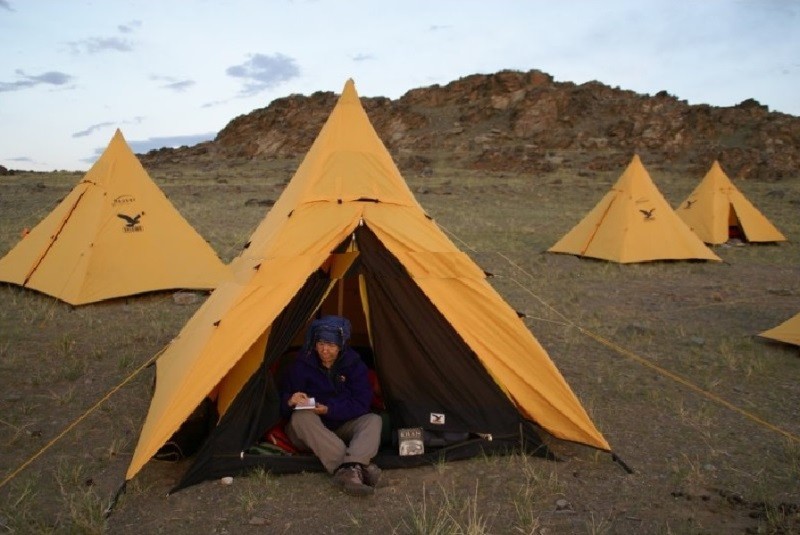
Adventure in Mongolia
Now the tents are all up and a few flakes of snow float in the dusky air above, Bataa has turned his attention to the mess-tent. Mongol style: blue, with white appliquéd decorations.
The rest of us are a bit dazed after the flight from Ullaabaatar to Ulaangom, a long drive and the last approach ‘trek’ part crawling up and down tussocks the size of mountains.
There hasn’t been much time for introductions tonight so we all aim for the comforting feel of a down sleeping bag.
I spot Bataa making the last night round, sentinel style (is he looking for wolves, I wonder?).
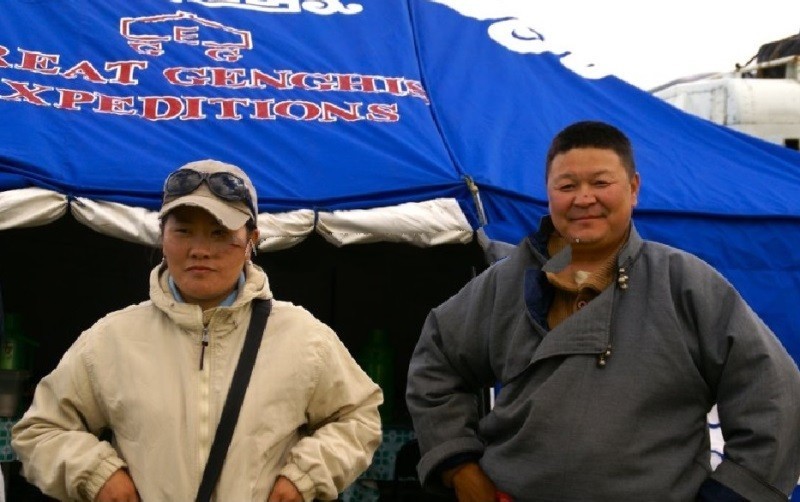
To ward off the cold he has thrown a Soviet-issued military cape over his deel, the Mongolian traditional long coat fastened at the waist with a long yellow cummerbund.
He looks like he’s going to run this expedition with military precision alongside with Tim Cope who went later on to produce the book and ABC series: On the Footsteps of the Nomads.
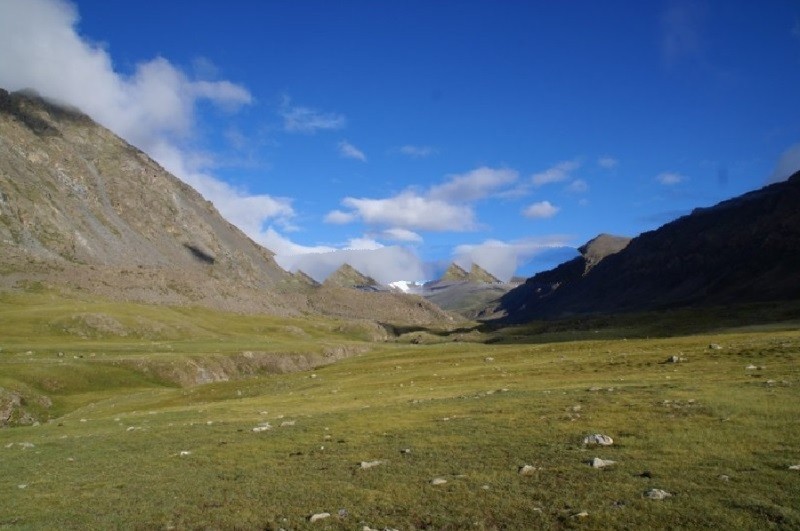
When morning comes the spectacle of nature unfolds itself.
The mountains we are nudged against are in sharp focus; the lake we are camped by reflects the rising sun like a mirror; the handful of bright yellow tents looks like a giant’s discarded daisy chain.
In the distance, a hanging glacier begins to glint. The trek towards the glacier is an ankle turner -because of the tussocks- though spongy.
A ger (still the traditional abode of nearly half the population of Mongolia) appears in the distance after a couple of hours walk.
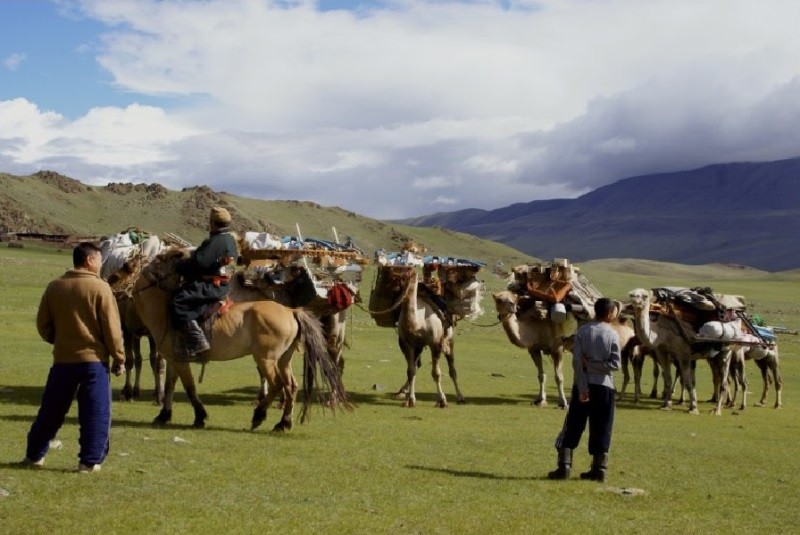
Bataa approaches first and greets the family inside. When the dogs settle, we come forward.
A woman in a hot pink dressing gown and heavy-duty Mongolian boots is helping a baby yak find his mother’s udder.
Nearby, the yak crèche is in full swing: there are about 30 curly head calves each tethered individually to a long line grouped by age: from weeks old infants to more mature pre-adolescents.
They will remain there till their mothers come back from a good grazing and a good time out with the girls.
They roam free-range, under the watchful eye of a few huge mastiffs keeping a look out for wolves.
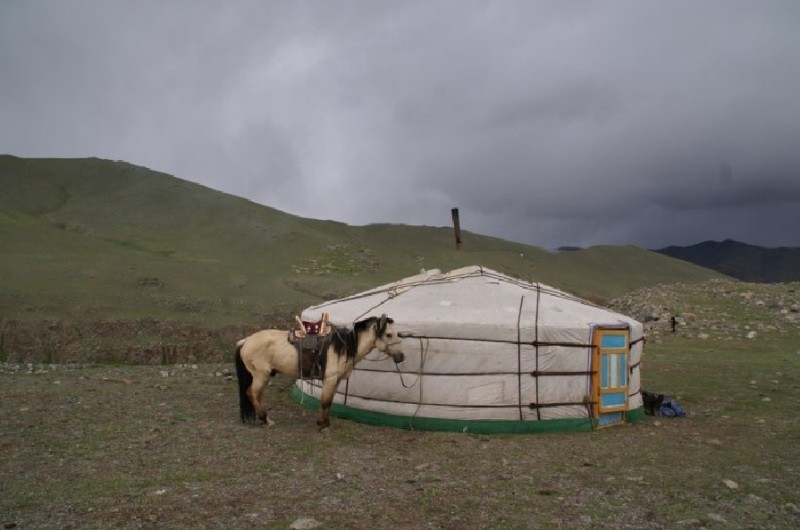
The ger’s top is covered in yak’s cheese balls drying in the air. Inside, we are offered a warming bowl of steaming yak’s milk and platefuls of curd.
Grandmother is still in bed but that doesn’t hinder the hospitality. Nobody comes around for months. A young woman wearing jeans and green eye shadow joins us.
She lives in Ulaangom now -she says in good English. She is a boot maker and has gone to town to open a shop there.
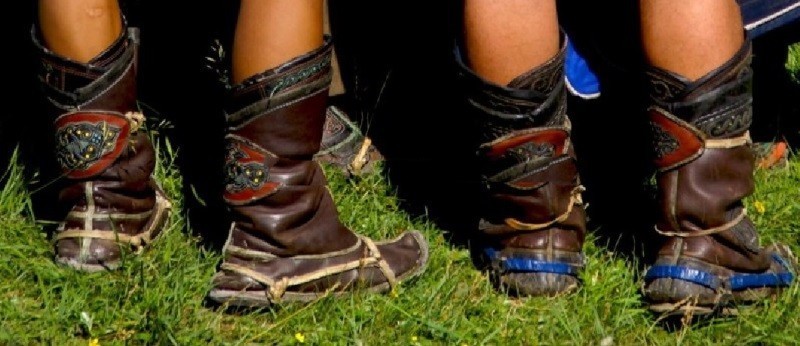
Genghis Khan
Mongolian boots are serious business. Made of strong leather with upturned tips (a throw back to the advent of Buddhism via Tibet; originally the upturned tips prevented the wearer injuring the earth). This footwear has served the Mongols well.
From the times of Genghis Khan to the present, boots are worn by men and women alike. They are warm, waterproof and last a lifetime. Mongolian wrestlers particularly covet the fancy versions with elaborate stitching and designs.
After the Great Khan died, the empire he built was expanded and ruled by his grandson Kubilai who officially adopted Buddhism making a Tibetan Lama his close advisor.
As the empire entered a quieter period, conquests ceased and a more peaceful period followed. As a result, the martial streak running in Mongols’ veins had to find an outlet.
The ‘Three Manly Games’ became a feature of Mongolian life. Neighbouring clans would get together once a year to compete in archery, wrestling and horse riding. The Nadaam Festival was born.
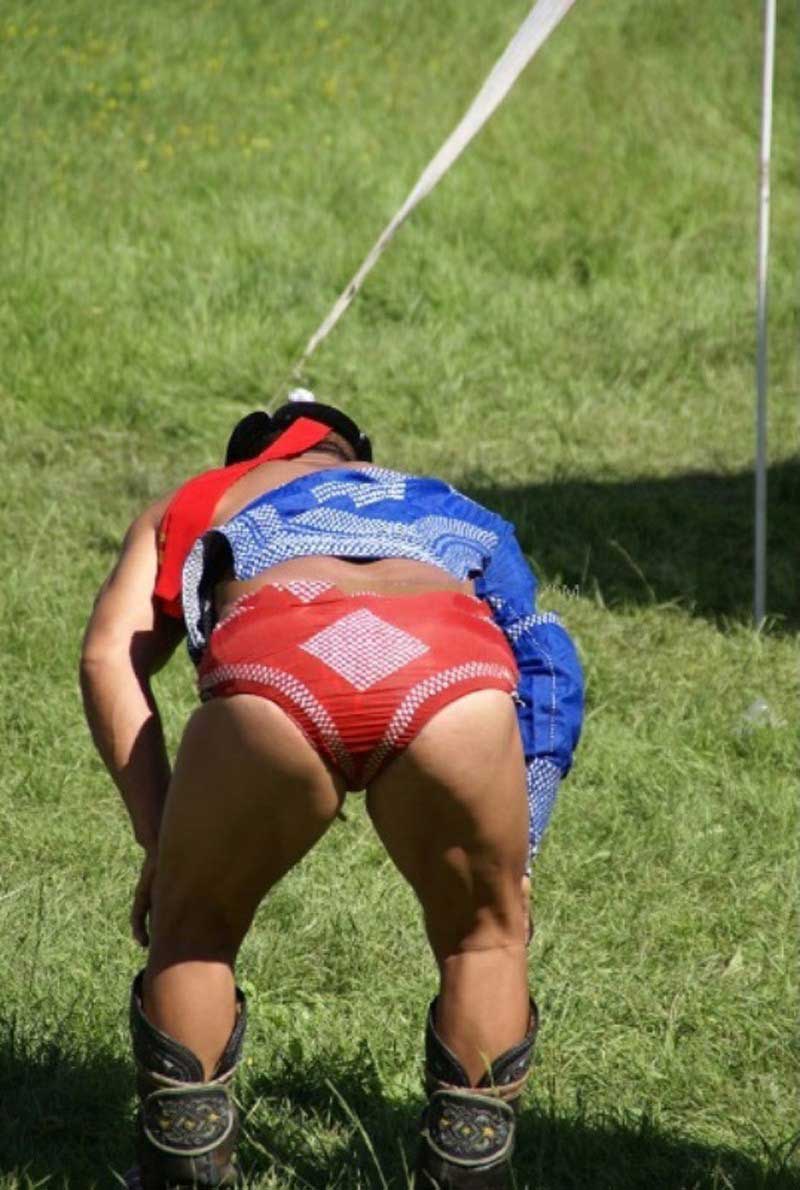
Nadaam wrestling
Ulaangom’s Nadaam wrestling matches take place in a huge oval with long lush summer grass in the middle.
Beefy men in satin speedo-like bottoms and cropped boleros with long sleeves stretch and warm up in groups.
The bolero has an interesting story behind it. Legend has it that in early days there was an unbeatable champion, eventually discovered to be a woman.
Since then, wrestlers half-expose their chests to dispell any doubts about their gender. The outfit is completed by traditional boots and the loovuz, a hat with a metal central spike ending in a knot called the zangia, a sort of mystical wireless connection to Heaven.
Early on, it was considered a humiliating punishment if the zangia was torn off. To tread or step over it is still considered to be an insult to the owner.
The wrestlers carefully remove their hats before an encounter and give them to their trainers for safekeeping.
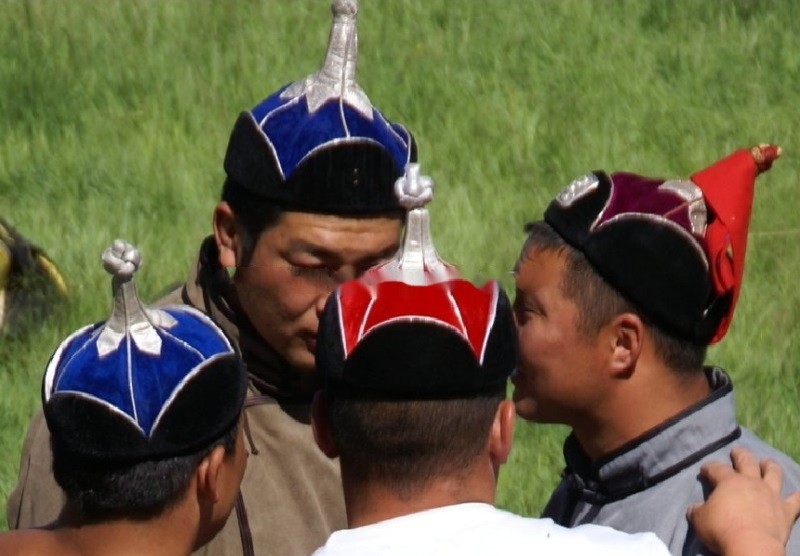
As the matches unfold, the crowds cheer for their favourites but are in continuous motion. Behind the stands there are stalls offering local delicacies and children in their party dresses queue for sweets while the victorious winners do an eagle-dance in front of the VIP stand.
With arms outstretched, they swirl slowly around the Mongol war standard, a pole holding two pendants made of horses’ tails: one white and one black. Later, the out-of-town warriors pick up their mobiles to report their deeds home.
We choose horse races over archery and go out of town, where we look for a position up an earth-bank overlooking the open steppe.
Picking our way between whinnying ponies, sleeping dogs and hundreds of parked motorbikes we keep an eye out for the tale-telling plume of dust rising in the distance.
One by one, the ponies fly past the finishing line, most ridden by pre-adolescent children. It is a horse festival to behold.
That night, inspired by the games and before the final push into the Altai Mountains, we drink and make merry under the flapping mess-tent. It is Bataa’s turn to introduce himself formally.
He is a Gobi man -he says looking deep into his vodka- born to desert sands and high winds, a true nomad that loves spending summers leading the adventures he dreams up.
He also casually admits to holding a second job: he is a Professor of Electrical Engineering at Ulaanbaatar’s Technical University-trained in Russia.
His real mission, however –he says- is to show the land of Genghis Khan in all its splendour to the world.
Travelling with nomads is the way to go and from that night on I stop looking over my shoulders for wolves.
Mongolia travel
For more information see Great Genghis Tours & Expeditions
Plan Your Trip

Rent A Car – Find the best car rental rates at Discover Cars. They compare car hire companies to provide you with the best deal right now.

Find A Hotel – If you’re curious about this article and are looking for somewhere to stay, take a look at these amazing hotels.

